On the morning of August 13, 2023, I took a flight from Kathmandu to Janakpur. It was the scariest domestic flight that I ever took in my life. The aircraft took off in rain and fog and the entire time, the scene outside was blank white. Abhishek and I had planned to go on a pilgrimage in Northern India. That evening, we strolled around Janakpur city. The city area was by no means perfect, I have to admit that it was unordered, cluttered, and atypical of an idealistic tourist destination, but by all means, it was rich in culture. We were immersed in conversation about the importance of religion and it was a delight to have such a deeply philosophical conversation about religion in the premise of Janaki Temple. Abhishek and I had both studied the Ramayana, and we picked up and discussed various anecdotes from the Ramayana as we strolled around the temple and city as a whole.
The next day, we headed to Abhishek’s village in Bathnaha, Mahottari. The vibe of the inner Terai region was very unique. Even though I had been here several times, I had only been to the core city areas and not to the heart of the village of the Terai region. As we got closer to Bathnaha, the view from the tempo felt like an infinite stretch of green desert and cows and cattle grazing. It was peaceful and silent, greeneries everywhere, it felt like the grazing land of the Sahara, the land of animals, some kind of national park with infinite green stretches of land. We had planned on crossing the Indian border that day knowing that we might not be able to because it was the eve of Independence Day in India. Regardless, we packed and breezed toward the Indian border, deluded that we made it to India illegally at midnight. What followed after that will live in both of our memories. We took a bus from Sursand Bazar to Patna, and the boarding was at 10:50. We had booked a cubicle inside the bus so that we could sleep the entire night we were traveling. However, the cubicle was the size of a tomb, and Abhishek and I had to squeeze our way there.
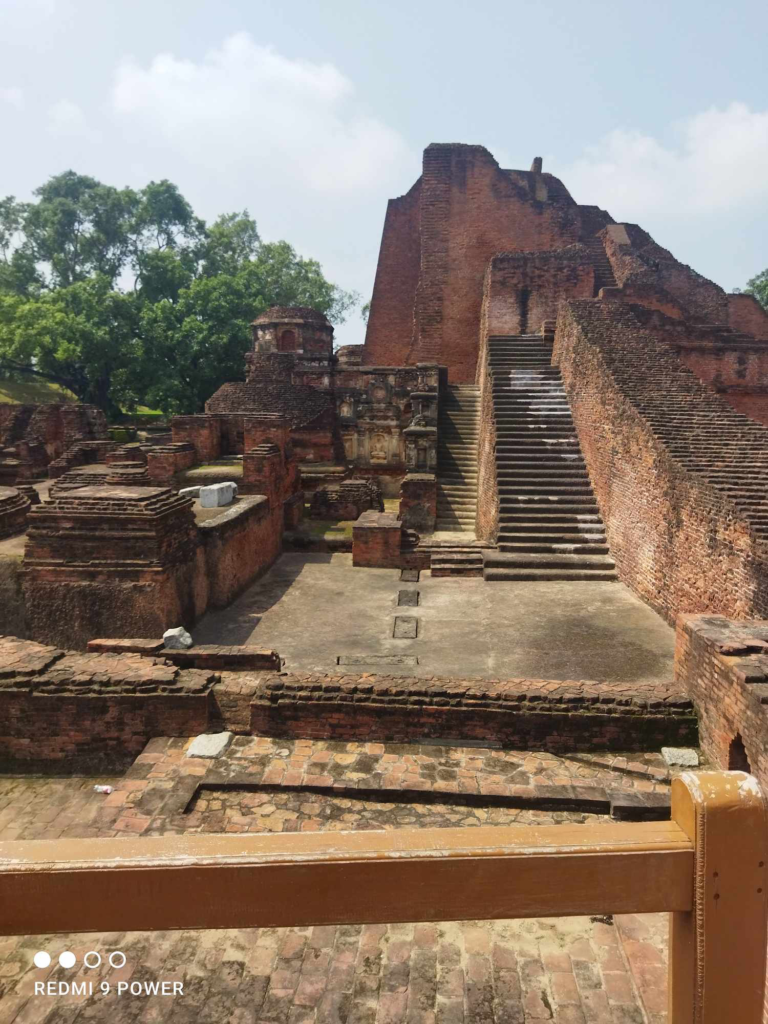
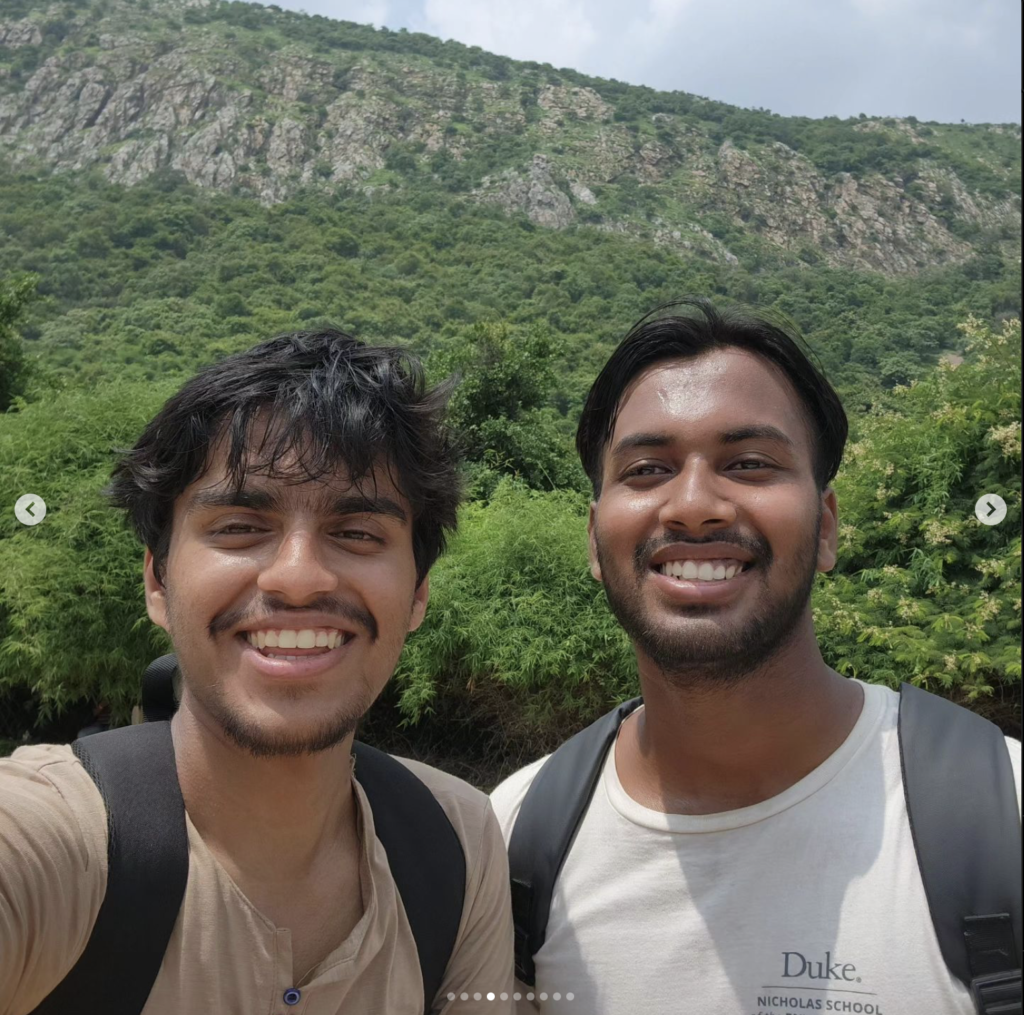

For some reason, the AC control system had broken down, so we were freezing inside that cubicle, and we couldn’t sleep at night. We tried ways to make it work, we tried piercing the AC, throwing papers inside, covering it with our bags, and sometimes our shoes and as soon as it seemed to have worked, it always failed, either the bag dropped down, the paper shot outwards or the shoes fell down. I must say we put up a good fight with the AC but in the end, the AC won that fight. It was a constant struggle that night. But we had good laughs about it, some videos and pictures were taken, and overall a fun memory to reminisce over.
My first instinct of Patna was bizarre. I was overwhelmed by the hot temperature, by the number of people in our local bus, and by the traffic and pollution outside. It was exponentially worse than what I had seen in Nepal. Our first destination was the ruins of Nalanda. Nalanda University has a unique history dating years back. Historians believe it to be the world’s first residential university. The University no longer exists but its archeological ruins remain. The ruins reminded me of Petra. There were structures made of bricklayers and many of those structures had Buddha inscribed to them. I found it amazing that people at that time had architectural skills amazing, there were curves in walls and all sorts of designs to bricklayers that didn’t seem like old architecture, that resembled some parts of modern architecture.


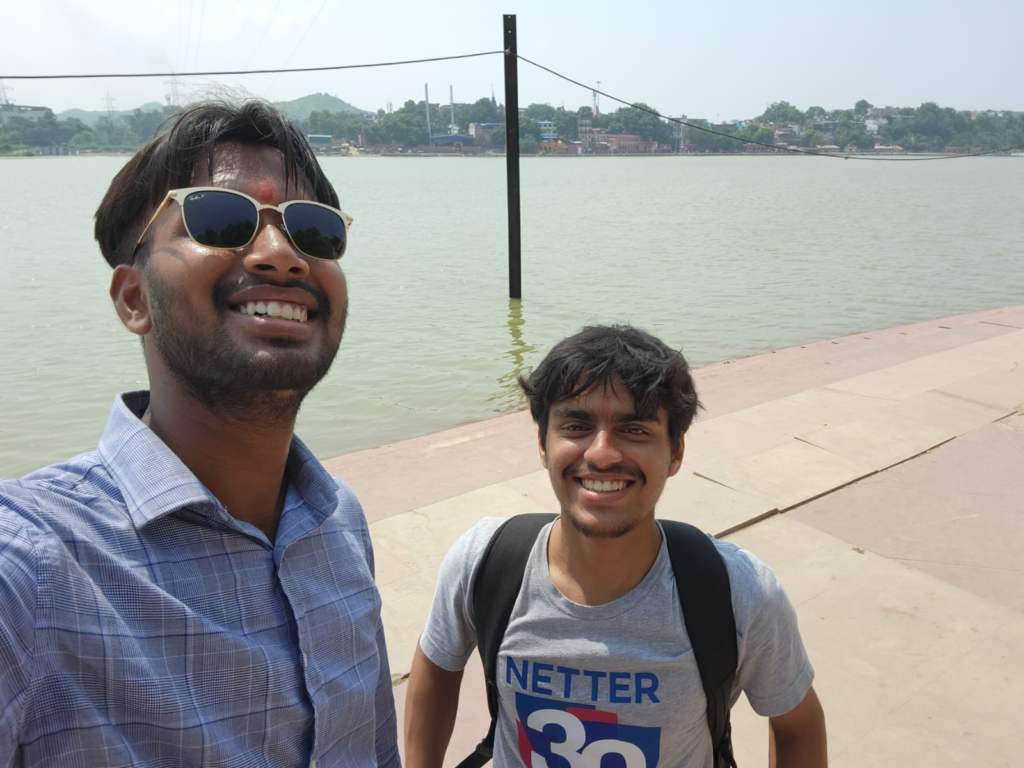
After getting our lunch, we headed to Rajgir. It is recorded in history that Buddha went to Rajgir over the rainy seasons in the hills for a calm place to meditate and introspect. In places like Sonabhadra Caves, you could find ancient inscriptions dating back 2500 years, written in a script that’s said to be indecipherable. These caves also had sculptures of Buddha, Vishnu, and other Hindu gods. It was a perfect spot to explore the blending of Hindu and Buddhist philosophies, showing how similar they are in their views on life and death. This region, one of the most rural parts of India, was filled with deeply faithful people. We were fortunate to visit during a special event called “mela” or carnival, held once every three years during the lunar month of Purushottam Mas, at Brahma Kunda, a sacred lake. Pilgrims from all over India gathered there, making it our first experience of the intertwining of Buddhism and Hinduism outside of Nepal. Traveling through the serene and picturesque rural landscapes of India was truly fulfilling.
We then took a train to Gaya. It was one of the most ridiculous train rides of my lifetime. We had to push through everyone to get across the stampede at the entrance of the train to find our spot inside. People often jumped onto the railway tracks, there was dense litter everywhere, and people slid underneath a temporarily parked train to get across the platform, the scene was very overwhelming yet unique and frankly astonishing. The illiteracy and poverty in Bihar were very striking. It was impossible to even get out of the train without voluntarily pushing through people. Despite this, as we started moving away from the city area, I began relishing the view from inside the train. India seemed very remote and unoccupied to me. The media seemed to focus on the problem of overpopulation but I felt like India had the capacity to accommodate 10 times more people than they have right now. The scene was somewhat reminiscent of what I had witnessed in Abhishek’s village in Bothnaha – an endless expanse of lush greenery that appeared to have no boundaries. It exuded tranquility. We arrived in Gaya at midnight, around 12.
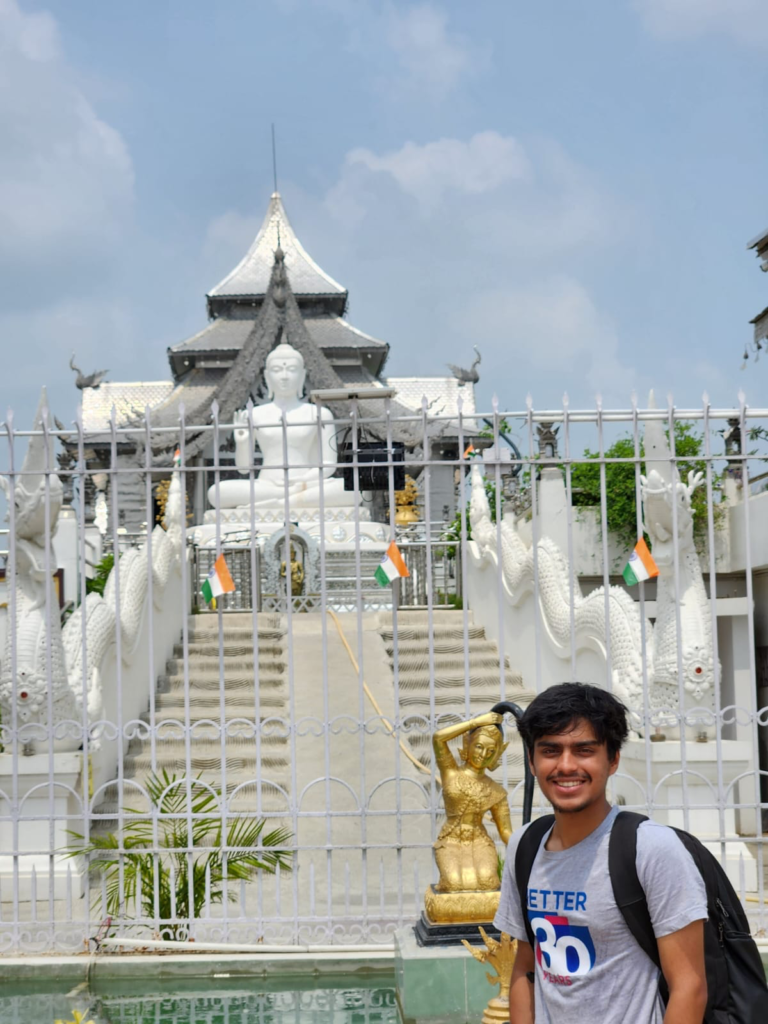

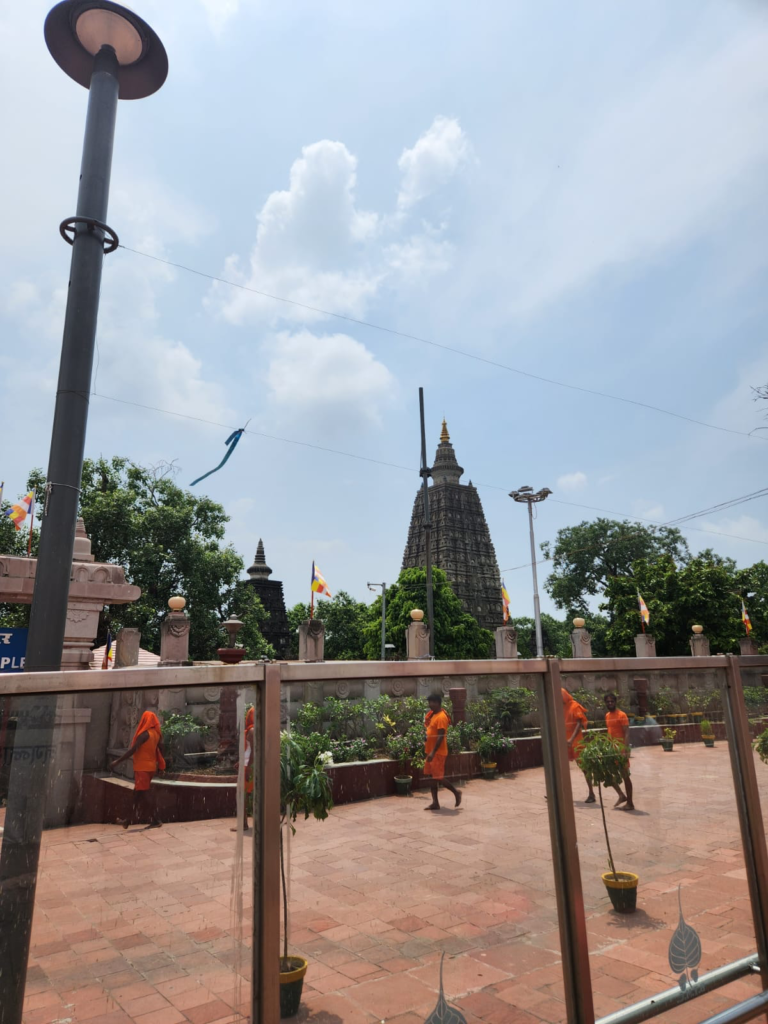
Legend has it that Buddha achieved full enlightenment, or “buddhatva,” under the Bodhi Peepal Tree in Bodhgaya, India. This place had the most serene atmosphere, and sitting beneath the very tree where Buddha had attained enlightenment was both overwhelming and deeply satisfying. We even plucked a leaf from the tree to take home as a memento. There were numerous other temples and monasteries built by different countries, along with an impressive 80-foot Buddha statue. However, the oldest temple with the Bodhi Briksha tree was strictly regulated, and phones were not allowed inside. We simply entered and spent an hour sitting in silence beneath the same tree, soaking in the profound ambiance of the land of enlightenment.
Our next stop was Sarnath, where Buddha delivered his first sermon to his disciples after attaining enlightenment. This historical site featured excavated ruins of ancient temples, monasteries, inscriptions, and stupas, all dating back two thousand years. It was a serene place where the echoes of culture and history beckoned to be discovered and comprehended. For a moment, I tried to imagine myself in the shoes of Lord Buddha. I found it remarkable that a person of that era could come up with such belief systems. It was just amazing to me how a person who lived in an era where people didn’t even understand the gravity of questioning the meaning of existence came into the light of understanding all the preachings inscribed in ‘Dharma’. After this journey, my admiration and belief in Lord Buddha grew even stronger.
Our final pilgrimage took us to Varanasi, where Abhishek’s mutual friend Rajveer showed us around the city. We ate some street foods, visited ancient museums and most important of all, went to see the holy Ganga river. Goddess Ganga is an important figure in the Mahabharata for her role in the birth of Bhishma, who was born to King Shantanu and Ganga. It was fascinating to see the same river in front of me. I stood there alone, deep in thought, and offered my prayers. We boated in the Ganga River and the view of the ghats and Vanarasi as a whole was very enticing, it kept me pensive for a while. Ganga Arati was one of the most wholesome and fulfilling experiences of my entire life. The crowd, the religious songs, the unity among everyone, the beckoning of prayers, the depth of devotion, was just so rich in everyone’s face. It was a divine experience and right after Arati, I made a heartfelt promise to Ganga that I would come see her again to experience that divinity and energy she had in store for me once again.
With our spiritual journey now behind us, we embarked on our return trip. We took a train from Varanasi to Gorakhpur at midnight 12. The train was so crowded that we barely had a place to stand. I have to say that we made a brave decision to still board the train because when we did that, we assumed we would be standing for 6 hours straight from 12 AM to 6 AM until we reached Gorakhpur. Fortunately, few people moved out, and even amongst people who were standing in the crowd, we squeezed our way to the top of the train and slept with our bag as a cushion. It was a brave and adventurous ride and we were lucky overall not to fall prey to pickpocketing. We then took a taxi from Gorakhpur to Butwal and on that same day, I caught a flight from Bhairawa to Kathmandu. I must say, traveling to India with Abhishek was an enriching experience. I am inspired to delve deeper into religious textbooks and I feel like I have found meaning and relevance of religion in my life. And I think I now believe that if you absorb the Bhagavad Gita, read the ‘Dharma’, and understand the preachings from Mahabharata and Ramayana, there’s no need for any self-help textbooks in the world. My journey with Abhishek was a transformative and enlightening experience, and it has left an indelible mark on my spiritual path.
8 responses to “Exploring India’s spiritual treasures”
Very good
Dhanyabad!
Nice one aadim
Thank you Sumit!
Great read! Glad you had a good time in India Aadim
Thank you Andrew!
Maja aayo, maja aayo
Haha, thanks for reading!